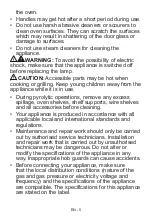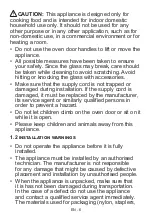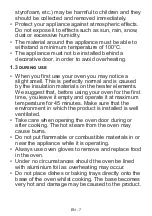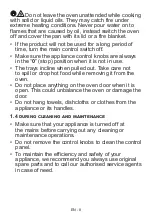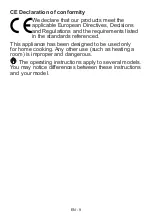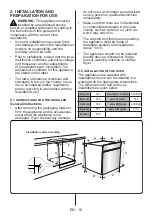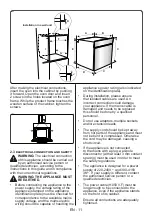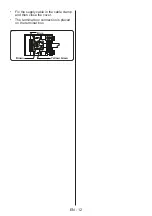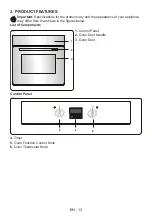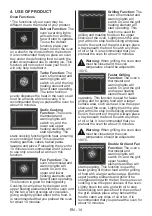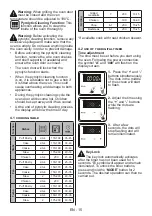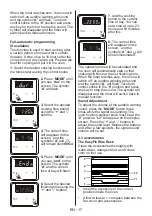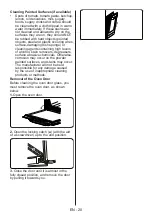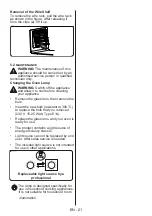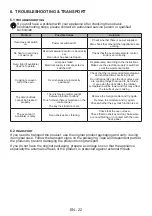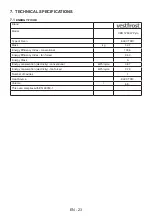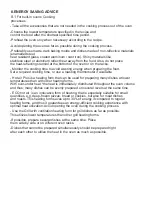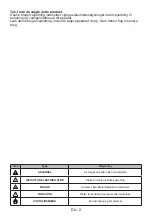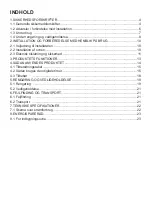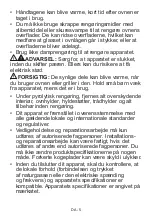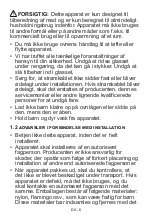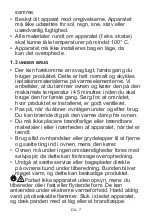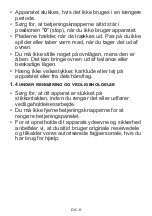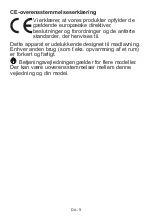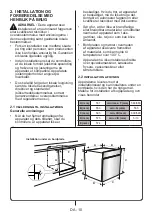
EN - 19
5. CLEANING AND
MAINTENANCE
5.1
CleaninG
WARNING:
Switch off the appliance
and allow it to cool before cleaning is
to be carried out.
General Instructions
• Check whether the cleaning materials
are appropriate and recommended by
the manufacturer before use on your
appliance.
• Use cream cleaners or liquid cleaners
which do not contain particles. Do not
use caustic (corrosive) creams, abrasive
cleaning powders, rough wire wool or
hard tools as they may damage the
cooker surfaces.
Do not use cleaners that contain
particles as they may scratch the
glass, enamelled and/or painted parts
of your appliance.
• Should any liquids overflow, clean them
immediately to avoid parts becoming
damaged.
Do not use steam cleaners for
cleaning any part of the appliance.
Cleaning the Inside of the Oven
• The inside of enamelled ovens are best
cleaned while the oven is warm.
• Wipe the oven with a soft cloth soaked
in soapy water after each use. Then,
wipe the oven over again with a wet
cloth and dry it.
• You may need to use a liquid cleaning
material occasionally to completely
clean the oven.
Pyrolytic cleaning
WARNING:
Before activating the
pyrolytic cleaning function, remove any
excessive spillage and make sure that
the oven is empty. Do not leave anything
inside the oven, such as wire grids, trays, or
oven shelves and supports (if available), as
they could be damaged during pyrolytic
cleaning.
• The oven cavity is coated with a
special enamel that is resistant to high
temperatures. During the pyrolytic
cleaning operation, the temperature
inside the oven can reach about 475°C.
• The oven door will automatically lock,
for your safety, while the pyrolytic
cleaning function is in operation. After
the cleaning is complete, the cooling fan
will begin operating and the oven will
remain locked until it has cooled.
• It is advisable to wipe the oven down
with a sponge soaked in warm water,
after each cooking operation or pyrolytic
cleaning cycle has been carried out.
• During the pyrolytic operation, a smell
and some fumes will emanate due to
the destruction of food residue within
the oven. This is normal. Oven cleaning
fumes could be fatal to birds, children
and pets so all should be kept away
until the operation is complete.
• The area where the oven is installed
should be kept well-ventilated,
especially during the pyrolytic cleaning
function, and any doors leading into the
area should be closed to avoid passing
the smell and fumes throughout.
Cleaning the Glass Parts
• Clean the glass parts of your appliance
on a regular basis.
• Use a glass cleaner to clean the inside
and outside of the glass parts. Then,
rinse and dry them thoroughly with a dry
cloth.
Cleaning the Stainless Steel Parts (if
available)
• Clean the stainless steel parts of your
appliance on a regular basis.
• Wipe the stainless steel parts with a soft
cloth, soaked in only water. Then, dry
them thoroughly with a dry cloth.
Do not clean the stainless steel parts
while they are still hot from cooking.
Do not leave vinegar, coffee, milk, salt,
water, lemon or tomato juice on the
stainless steel for a long time.

